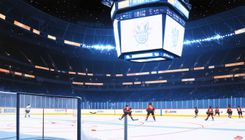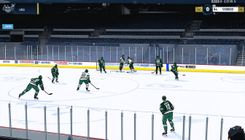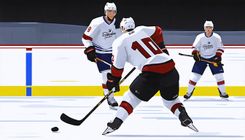NHLs New CBA Introduces Development Opportunities for 19-Year-Old Prospects

The current NHL collective bargaining agreement (CBA) is set to expire in September 2026, a prospect that may evoke anxiety among those familiar with the league's history. Fortunately, owners and the NHL Players Association reached a framework agreement for a new deal this past summer. Although the full Memorandum of Understanding for the new CBA has not yet been publicly disclosed, notable changes have already been highlighted by NHL insider Frank Seravalli. A particularly significant modification allows each NHL team to assign one 19-year-old prospect to their American Hockey League (AHL) team each season. This policy will impact a maximum of 32 players annually, altering the developmental landscape for NHL prospects considerably.
Currently, the Canadian Hockey League (CHL)-NHL agreement stipulates that players drafted from one of the Canadian major-junior leagues—namely the Ontario Hockey League (OHL), Western Hockey League (WHL), or Quebec Major Junior Hockey League (QMJHL)—cannot be assigned to the AHL or ECHL until they either turn 20 years old or complete four seasons in the CHL. However, players drafted from other junior leagues, who later joined a CHL team, are exempt from this rule. The new CBA will take effect in the 2026-2027 season, potentially affecting players born in 2007. For instance, Vancouver Canucks prospect Braeden Cootes is set to turn 19 in February 2026, making him eligible to be assigned to the Abbotsford Canucks that fall, should the team's management decide his WHL experience is no longer optimal for his development.
This new rule is particularly relevant as it is based on age rather than draft year, allowing recently drafted CHL players who turn 19 in the fall immediately following their draft to bypass returning to the CHL altogether. A notable example is Ryan Roobroeck, a highly regarded prospect eligible for the 2026 draft, who was born in September 2007. Should he sign his Entry Level Contract (ELC) promptly and participate in his NHL team's development camp, he could be assigned to the AHL instead of returning to the Niagara IceDogs of the OHL. This policy introduces a vital development path for CHL-affiliated prospects, addressing long-standing issues in player development. The potential advantages of this rule are underscored by instances in recent seasons, such as Cole Perfetti, who played for the Manitoba Moose during the pandemic disruption of his OHL season, and Shane Wright, who received a waiver to play with the AHL's Coachella Valley Firebirds. Both players benefited more from playing at the AHL level than returning to their respective junior leagues, showcasing the improved developmental opportunities the new CBA aims to facilitate.









